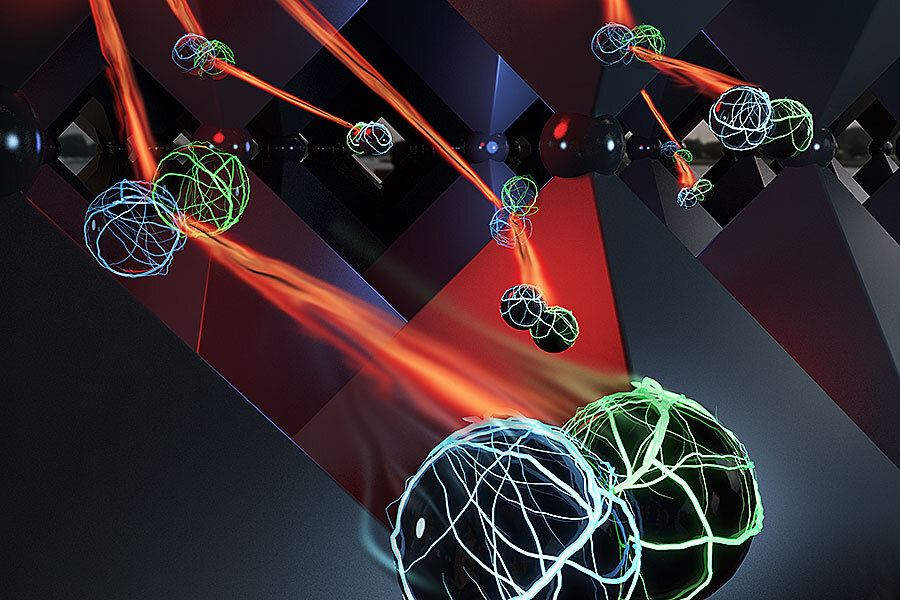Recycling sunlight: a solar cell revolution?
Loading...
The world of solar cells could be on the cusp of a revolution, as researchers seek to boost efficiency by harnessing the power to recycle light.
A new study, published Thursday in the journal Science, considers the properties of hybrid lead halide perovskites, a group of materials already making waves in solar cell technology, and demonstrates their ability to absorb energy from the sun, create electric charge, and then churn out some light energy of their own.
Moreover, the researchers demonstrated that such these cells can be produced cheaply, with easily synthesized materials, making the proposition much more commercially viable.
“We already knew that these materials were good at absorbing light and producing charge-carriers,” says co-author Felix Deschler of Cambridge University, UK, in a telephone interview with The Christian Science Monitor. “But now we have demonstrated that they can also recombine to produce photons again.”
Solar cells work by absorbing the light energy – photons – from the sun, converting this energy into electrical charge, and then conveying that charge to electrodes, which take the energy out into the power-hungry world.
Hybrid lead halide perovskites were already known to do this task efficiently, but what Dr. Deschler and his team have demonstrated is an ability to do more: the perovskites are actually able to emit light themselves after creating charge – and then reabsorb that light energy.
The result is a solar cell that acts like a concentrator, able to produce more energy – to boost the voltage obtained from a given amount of light – than would a cell made of materials without this recycling ability.
“Why this is now a big thing is because the current record of photo cell efficiency rests at 20-21 percent, whereas the absolute limit is 33 percent,” says Deschler. “Our results suggest a route to achieve that limit.”
The efficiency of a solar cell refers to the percentage of energy, given a certain amount of light, it can harness for use.
According to a widely accepted 1961 paper by William Shockley and Hans Queisser, theoretical thermodynamics cap solar efficiency at 33 percent. It is simply impossible to do better, they argued.
Yet the beauty of this most recent work is not only the hope of climbing closer to that theoretical ceiling, but the materials used to do so.
“You wouldn’t expect photon recycling in our materials because their fabrication is so much simpler than others,” explains Deschler. “Our materials are very cheap to make, very versatile.”
The reason for surprise, even skepticism, is founded in the way these materials are made – via solution. This affords little control over the way in which the structure forms.
If you have impurities in a crystalline structure, you are left with a “defect site”, which makes the material “messier,” in terms of light absorption. Without such impurities, you have what is known as a “sharp absorption onset,” allowing efficient and clear absorption of the light.
“So, while they are very efficient,” says Deschler, “we’re still trying to understand why and how they’re better than other materials.”
The researchers expect considerable interest from solar cell producers looking for a cheaper, more efficient way to harness the power of the sun.








